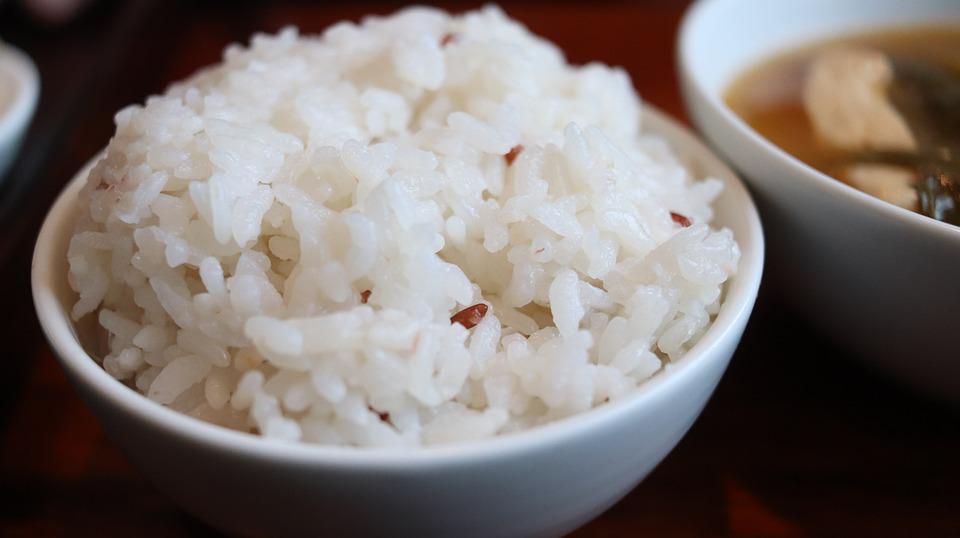
Explainer: What is fortified rice and why is it mired in controversy?

The Congress has targeted the Narendra Modi government over rolling out fortified rice under Public Distribution System (PDS) and accused it of going ahead with the decision without ascertaining the outcome of independent research and the ill effects of such rice on the health of 80 crore poor people.
Congress spokesperson Pawan Khera asked what was the tearing hurry to implement the scheme of providing fortified rice containing prescribed micronutrients and “what relation does the government have with the foreign conglomerate Royal DSM” which has bagged a major contract to distribute the rice in the country. He also sought to know whether any quid pro quo was involved.
A couple of days ago, the government said fortified rice was being distributed through ration shops in 439 districts and other welfare schemes so far while asserting that there is enough global evidence of its health benefits.
Also read: Fortified rice is nice, but the Centre’s plan to promote it is flawed
Prime Minister Narendra Modi, in his Independence Day address in 2021, said the government aims to distribute fortified rice via government schemes by 2024. Thereafter, a scheme for distributing fortified rice, containing prescribed micronutrients — iron, folic acid, Vitamin B12 — was launched on October 2021 in a phased manner to address the problem of anaemia among women and children.
Congress spokesperson Khera alleged the Modi government rolled out fortified rice under the Food Security Act despite “failed” pilot projects and multiple warnings by experts, government officials, FSSAI and Niti Aayog advisors.
So, what is fortified rice and why the government move is being termed as controversial?
What is fortified rice?
According to the Food Ministry, fortification of rice is a cost-effective and complementary strategy to increase vitamin and mineral content in diets. According to FSSAI norms, 1 kg fortified rice will contain iron (28 mg-42.5 mg), folic acid (75-125 microgram) and Vitamin B-12 (0.75-1.25 microgram). In addition, rice may also be fortified with micronutrients, singly or in combination, with zinc, Vitamin A, Vitamin B1, Vitamin B2, Vitamin B3 and Vitamin B6.
What’s the need to fortify staple food?
India has very high levels of malnutrition among women and children. According to the Food Ministry, every second woman in the country is anaemic and every third child is stunted. The deficiency of micronutrients or micronutrient malnutrition, also known as “hidden hunger”, is a serious health risk. Rice is one of India’s staple foods, consumed by about two-thirds of the population. Therefore, fortifying rice with micronutrients is an option to supplement the diet of the poor.
Also read: No takers for fortified rice in Tamil Nadu?
How is rice fortified with iron?
Under the fortification scheme, milled broken rice is reduced to dust and a premix of vitamins and minerals is added to it. Thereafter, an extruder machine is used to produce fortified rice kernels (FRK) resembling rice grains. The kernels are then mixed in a 1:100 ratio with regular rice to produce fortified rice. The cost to the consumer is estimated to be less than 50 paisa per kg.
According to the food ministry, the fortification programme aims to cover 291 aspirational and high burden (nutrient deficient) districts across the country by March 2023, for which 9 million tonnes of fortified rice has been produced.
What’s the controversy all about?
The Congress claimed that a Niti Aayog member had raised the concerns expressed by some medical experts about the adverse effect of iron-fortified rice on the health of children.
The party claimed that this was also mentioned by the director general of the Indian Council for Medical Research (ICMR) who called for the need for consultation with a wide range of experts on the effect of fortification of rice on human health before pushing it further. Member of NITI Aayog’s National Technical Board on Nutrition Anura Kurpad also found an increase in serum levels linked to diabetes in children who were given iron-fortified rice, Khera claimed.
Khera said that to test whether fortified rice really cures anaemia and other micronutrient deficiencies that lead to stunting and wasting, the government launched tests under a pilot scheme in February 2019 which were to go on till March 2022. But instead of waiting for the results of all the tests, PM Modi announced a full-blown scheme in 2021, affecting over half of the country’s population, he claimed.
What are the issues with fortification of rice?
According to some studies published in the medical journal Lancet and the American Journal of Clinical Nutrition, both anaemia and Vitamin A deficiencies are overdiagnosed, which means that mandatory fortification could lead to hypervitaminosis.
Hypervitaminosis is a condition of abnormally high storage levels of vitamins, which can lead to various symptoms such as irritability or even toxicity.
Watch | Bio-fortified rice or reconstituted fortified rice?
Another major problem with the chemical fortification of foods is that nutrients don’t work in isolation but need each other for optimal absorption. Adding one or two synthetic chemical vitamins and minerals will not address the larger problem and can lead to toxicity in undernourished populations.
Besides, men can see a variety of bad effects. An increase in serum ferritin levels is associated with an increased risk of chronic diseases like diabetes and hypertension. Only about a quarter of men in the 15-49 age group are anaemic in India.
Incidentally, FSSAI has a warning in place. It has mandated that every packet of food fortified with iron should be sold with the following disclaimer: “People with thalassemia may take under medical supervision and persons with sickle cell anaemia are advised not to consume iron-fortified food products.”


